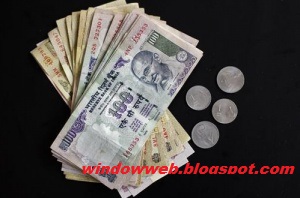Fitch today lowered India's credit rating outlook to negative from stable, less than three months after rival Standard and Poor's did a similar downgrade. It cited corruption, inadequate reforms, high inflation and slow growth as reasons for the revision.
Mukherjee said that Fitch has not taken note of many of the government's recent initiatives including fertiliser subsidy reform, capping subsidies as a fraction of GDP, new manufacturing and telecom policies.
"It (Fitch) has missed the process of strengthening of public finances in India as is evident by, inter-alia, a gradual reduction of government debt/GDP ratio in the last few years, as compared to an increase in this ratio for most of the major economies in the world," the Finance Minister noted.
According to Mukherjee, the concerns expressed by the rating agency on the economic growth potential, inflationary pressures and weak public finances have already been "taken note of" by the government.
In its report, Fitch said that India faces an "awkward combination" of slow growth and elevated inflation. Further, the country is also facing "structural challenges surrounding its investment climate in the form of corruption and inadequate economic reforms", it added.
 In a fresh blow to India, Fitch ratings revised its outlook for the Indian economy
to 'negative' from 'stable'. The rating agency has affirmed the
economy's long-term foreign- and local-currency issuer default ratings
(IDRs) at 'BBB-'. Fitch said that India's growth outlook could
deteriorate if policymaking and governance don't improve.
In a fresh blow to India, Fitch ratings revised its outlook for the Indian economy
to 'negative' from 'stable'. The rating agency has affirmed the
economy's long-term foreign- and local-currency issuer default ratings
(IDRs) at 'BBB-'. Fitch said that India's growth outlook could
deteriorate if policymaking and governance don't improve.According to Fitch Ratings, the revision reflects heightened risks that India's medium- to long-term growth potential will gradually deteriorate if further structural reforms are not hastened, including measures to enhance the effectiveness of the government and create a more positive operational environment for business and private investments.
The negative outlook also reflects India's limited progress on fiscal consolidation and, in particular, on reducing the central government deficit despite improvement in the financial health of state governments.
"Against the backdrop of persistent inflation pressures and weak public finances, there is an even greater onus on effective government policies and reforms that would ensure India can navigate the turbulent global economic and financial environment and underpin confidence in the long-run growth potential of the Indian economy," said Art Woo, Director in Fitch's Asia-Pacific Sovereign Ratings group.
Fitch, however, notes that India faces an awkward combination of slowing growth and still-elevated inflation. Real GDP grew just 6.5% yoy in FY2011-12 (end-March 2012), down from an 8.4% rise in FY2010-11.
"India's public finances are a key rating weakness compared with other 'BBB'-rated sovereigns, which constrains scope for fiscal policy flexibility. Fitch estimated general government debt stood at 66% of GDP at end-FY2011-12, against the 'BBB' median of 39%," the agency said.
Stating that the government cannot ignore the outlook revision to 'negative' for the Indian economy, Bimal Jalan, Former Governor of the RBI said that there was a need to revive investment cycle. Jalan told ET Now that the fiscal and monetary authorities need to work together to bolster investment.
The confluence of weaker economic growth and a large subsidy bill means India will likely miss its 5.1% of GDP deficit target for FY2012-13; Fitch expects it to be 5.6%-5.9% of GDP.
According to Fitch, India also faces structural challenges surrounding its investment climate in the form of corruption and inadequate economic reforms. Fitch forecasts real GDP to rise 6.5% yoy in FY13, down from a previous projection of 7.5%.
Fitch projects a rise in WPI by an average of 7.5% in FY2012-13 which, though lower than the 8.8% rise in FY2011-12, continues to be higher and stickier than Fitch previously expected, diminishing scope for monetary policy flexibility.






0 comments
Post a Comment